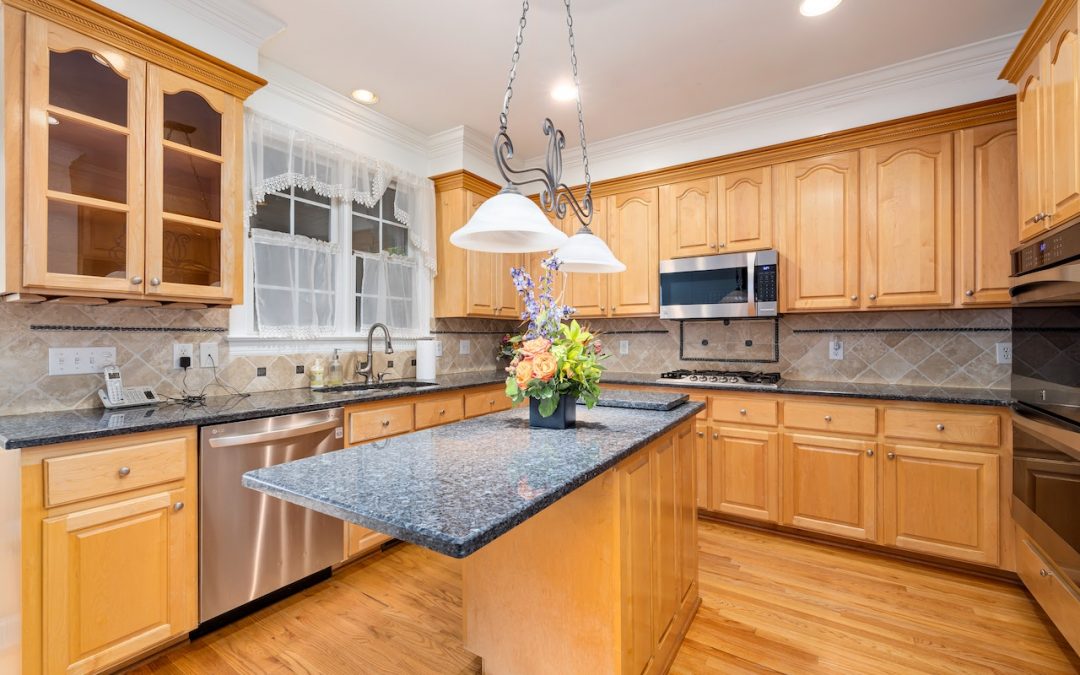When so many possibilities are available, it might be challenging to decide which option is best for your marble or granite countertop job. Just as important a choice as the counters themselves can be, making the ideal edge profile is never easy. When choosing your final decision at your natural stone fabricator, you’ll feel more assured if you’re aware of the shape and purpose of various edges. It might inspire original design concepts, like combining a few well-liked edge profiles for a distinctive and ornamental look.
When choosing edge profiles for your countertop, there are various things to consider. Style is first. The sort of edge profile used for your project should complement its design. Straight or quarter-bevel edges are perfect for modern and contemporary decors because they offer crisp lines and acute angles that go well with these design themes. Quarter round may also give stylish vanity granite tops in master bathrooms a trendy appearance.
How do countertop edge types differ?
Countertop edge types, also known as edge profiles, refer to how countertop edges are fashioned. Although it might seem insignificant, this can have a significant impact when trying to achieve a particular aesthetic in the home. Edge profiling is an example of a finishing touch that may distinguish your area and draw attention to your countertops. On the other hand, choosing a less complicated edge design can let other kitchen elements stand out and shine.
Types of Common Counter Top Edges
The three main varieties of countertop edges are straight Edge, curved Edge, and decorative Edge. Each variety can make a unique contribution to your sense of style. Let’s examine some of them.
1. Ogee Edges
Ogee edges have two gentle curves that form a lovely, rounded “S” shape. The curve’s hardness might range from a gentle wave to a more pronounced contour. These edges have an implied luxury because they are utilized almost exclusively in granite and quartz surfaces. They give the counters and cabinetry they are applied to a precise depth.
Ogee edges look best in larger rooms because the extra depth doesn’t overpower the space. They work wonderfully on stones that have delicate patterns that highlight the brilliance of the edge.
2. Flat Polished Edge (Eased Edge)
The top and bottom have the tiniest bend, but the edge is just short of being squared. They are filed just enough to soften the edges without giving them a rounded appearance, maintaining the appearance of straight lines and a flat profile. Countertop edges that have been rounded off fall just shy of being square. The overall profile will still have straight lines, but the edges will soften.
The atmosphere will be contemporary, understated, and elegant. With its modest elegance, this edge will highlight bright pattern choices.
These countertops work best in tight areas with sharp corners and decors that call for bold, minimalist, or contemporary patterns and hues.
3. Stepped Edge
Simply put, stepped edges are a sequence of cuts created in quartz or granite that simulate steps. These steps might appear more angular or rounded off to approximate an ogee edge.
Although more challenging to keep clean and maintain, the result is a contemporary appearance that gives room depth. Stepped countertops are daring and require a room accommodating their imposing contour (click this for more details).
4. Bullnose
A bullnose edge seems to be a half circle from the side. Both the top and bottom have been rounded to achieve a flawless curvature. Compared to an eased edge, it has a softer profile and is an excellent option for high-traffic areas, particularly in families with young children. These edges are invariably more aesthetically pleasing to any environment and softer than softened edges. They are less dangerous than options with sharper edges and are simple to maintain.

Round edges are ideal for areas where a low profile is preferred or where children will be running around. Additionally, they are the most excellent option for places where you are still determining how a sharper edge and a more defined profile will suit you.
5. Beveled Edge
With a 45-degree slice from the top, beveled countertops preserve their rounded appearance while forming an exciting line. Any room and stone hue will look good with a beveled countertop.
Beveled edges are one of the most popular options on the market and look good in almost any setting. They are low profile and simple to clean, but they also look more contemporary than rounded edges.
6. Chiseled
Your boldest decision is this one. Even though it doesn’t have as large of a profile as some cut edges, it attracts attention by emphasizing the stone’s inherent beauty. The rough, uneven faces of a chiseled countertop edge, also known as a shattered edge, give it a raw, organic character.
Pair this edge with a quartz or granite counters with shimmering or colorful flecks so that the natural stone itself may be the focal point. It also works nicely in rooms with a design pop or rustic or antique-looking furnishings.
7. Half Bullnose Edge
Countertops with a half bullnose have a flat bottom and a smooth, moderate slope along the top. The half-bullnose silhouette is effortless to clean and, with round edges, looks well in practically any space, making it a chef’s best friend.
The half bullnose should be your pick if you want a straightforward style that is simple to maintain or need an edge that won’t clash with other features in the space.
How to Pick the Right Countertop Edge?
Choosing the ideal countertop edges might take much work with so many alternatives. You must consider the room’s size, the cabinets it rests on, the overall design you want to accomplish, and the stone you have selected.
Consider your alternatives and contrast the various quartz and granite countertop edges to ensure that your project comes out just as you had hoped.

You can look at these possibilities with a seasoned countertop installer, such as Pioneer Granite and Quartz, and get their advice. They’ll help you make an informed choice regarding more than just the aesthetic appeal by allowing you to examine the possible edge and stone combinations through the lenses of their experience.

